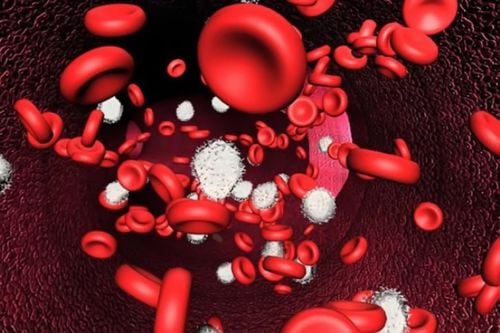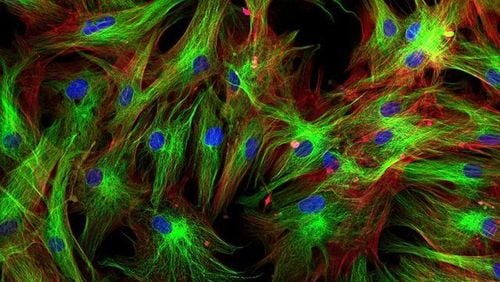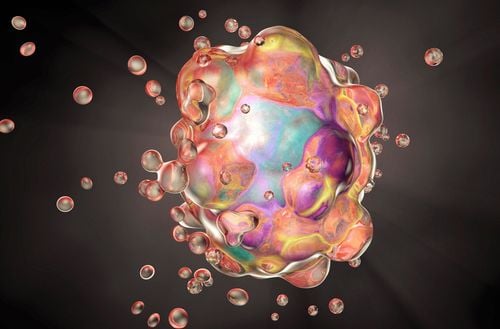This is an automatically translated article.
The human body is made up of cells and they do not live in isolation, they "communicate" with each other by transmitting messages through chemical and electrical signals. Chemical signals are usually proteins or other molecules that are secreted from the target cell into the extracellular space and arrive to bind to the recipient cell. The site where the messenger binds to the recipient cell is called a receptor. So, what are cell receptors and what types of cell receptors are there?
1. What are cell receptors?
Cell receptors (receptors) are macromolecule components (usually proteins) that exist in limited amounts in cells or on the cell surface, and play a role in signal transduction. through binding to ligands.Ligands are chemical signals secreted by signaling cells. Ligands can be chemicals, amino acids, proteins, lipids; or possibly hormones, neurotransmitters or drugs.
The receptor has the function of ligand recognition and specifically binds to ligands by chemical binding. The ligand-receptor interaction is then converted into a signal to induce a cellular response. Cell receptors are specific, i.e. can only bind to certain ligands. Simply put, the receptor is like a lock and the ligand is the key. Only key substances (certain ligands) can bind to that key (specific receptor.)
When the ligand binds to the receptor at the conjugation site, a cascade of biological responses occurs. Physiology follows, followed by activation or inactivation of proteins. Ligands that activate receptors for signal transduction are called agonists (also called agonists). In contrast, some ligands have the ability to inhibit or prevent the receptor from receiving information called antagonist ligands (also called antagonists). Antagonist ligands compete with the agonist ligand and thus inhibit the agonist's activity.
In the treatment of diseases, both agonists and antagonists have application value. For example, a beta adrenergic receptor agonist is adrenaline. When adrenaline binds to beta adrenergic receptors, activation of the receptor leads to vasoconstriction. In contrast, antagonists known as beta blockers (beta blockers) can be used as antihypertensive agents, because they block beta receptors and, therefore, vasodilate.
Cells can use the same receptors for completely different effects. For example, the H1-histamine receptor is involved in the allergic process, while the H2-histamine receptor in the stomach plays a role in promoting the secretion of gastric acid.

Các thụ thể tế bào (receptor) tham gia vào quá trình truyền tín hiệu thông qua gắn kết với các phối tử (ligand)
2. Cell receptor classification
The receptor plays an important role in signal transduction, immunotherapy, and immune response. Currently, receptors can be classified into two types as intracellular receptors and cell surface receptors.
2.1. Intracellular receptors The receptors in the cell are also known as intracellular receptors. There are two types of receptors in the cell:
Cytoplasmic receptors: Found in the cytoplasm, for example receptors for various steroid hormones. Nuclear receptor: A receptor located on the nucleus of a cell, such as a thyroid hormone receptor T3, T4, which binds directly to one or more chromosomes in the nucleus of the target cell. Intracellular receptors respond to hydrophobic ligands, have the ability to cross the plasma membrane, and play a role in regulating gene activity.
The mechanism of action of receptors in cells is that ligands with small molecular size and lipid soluble such as corticosteroids, sex hormones (progesterone, estrogen, ...) pass through the cell membrane to bind to the cell membrane. their receptors in the cytoplasm. The ligand-receptor complex then migrates into the nucleus of the cell and binds to specific sites on the chromosomal DNA molecule, activating gene transcription to form mRNA. After the mRNA is formed, it diffuses from the nucleus to the cytoplasm and promotes translation at the ribosome, and finally, the synthesis of new proteins (these proteins can be metabolic enzymes, transport proteins, etc.) , structural proteins).

Các thụ thể trong tế bào còn được gọi là thụ thể nội bào gồm có Thụ thể bào tương và Thụ thể nhân tế bào
2.2. Cell surface receptors Cell surface receptors make up the majority of cell receptors present in the body.
Each cell surface receptor has three main components: an external ligand-binding region, a hydrophobic transmembrane region, and an intracellular intracellular region. The characteristics of these regions vary widely, depending on the type of receptor.
Unlike intracellular receptors, the mechanism of action of cell surface receptors is that they bind to external ligand molecules, i.e. ligands that interact with receptors on the cell surface cells without having to enter the cells they affect. It then activates the intracellular region within the cell and induces specific biological effects.
Based on the signaling mechanism, the receptors on the cell surface are divided into three types: ion channel-linked receptors, G protein-coupled receptors (GPCRs) and G-protein-coupled receptors (GPCRs) and receptors. bind to enzymes. Ion-channel linked receptors: Cell receptors are ion channels located on cell membranes, which are more common in nervous system activity (acetylcholine, GABA, glutamide, aspartate, and aspartate). glycine ). When the ligand binds to the receptor, it activates the opening of ion channels and increases the transport of appropriate ions (Na+/Ca2+/K+,...) across the membrane, leading to a change in membrane potential. The result is biological transformations. For example, GABA binding to its receptor causes opening of Cl- channels, generating postsynaptic potentials, inhibiting central nervous system activity, resulting in decreased feelings of anxiety, fear, and stress. Enzyme-linked receptors (such as tyrosine kinase): Common in the action of growth factors such as epidermal growth factor, polypeptide hormones that regulate growth and differentiation. When a ligand binds to a cell receptor located on a transmembrane enzyme, it alters the activity of the enzyme located inside the cell. For example, insulin binds to the alpha subunit on the outside of the cell, activating the tyrosine kinase on the inside of the cell to activate the glucose transporter. G-protein coupled receptors: Most commonly found in the endocrine system, are receptors for amino acids, ecosanoids and many peptide hormones. Cell receptors that bind to G protein bind a ligand and activate a membrane protein called a G protein. The activated G protein then interacts with an ion channel or membrane enzyme (adenylyl cyclase, phospholipase C and phospholipase A2) leads to changes in the concentration of intracellular second messengers such as cyclic AMP, cyclic GMP, and Ca2+. It is these second messengers that alter cellular activity. Every cell in all organs of the body needs to exchange information to maintain physiological functions of the body. However, cell receptors are also implicated in the pathogenesis of several diseases. Therefore, understanding the pathogenesis and cell receptor activities helps scientists to find effective drugs to treat diseases.
Please follow the website: Vinmec.com regularly to update many other useful information.
Please dial HOTLINE for more information or register for an appointment HERE. Download MyVinmec app to make appointments faster and to manage your bookings easily.
References: ncbi.nlm.nih.gov, sciencedirect.com












